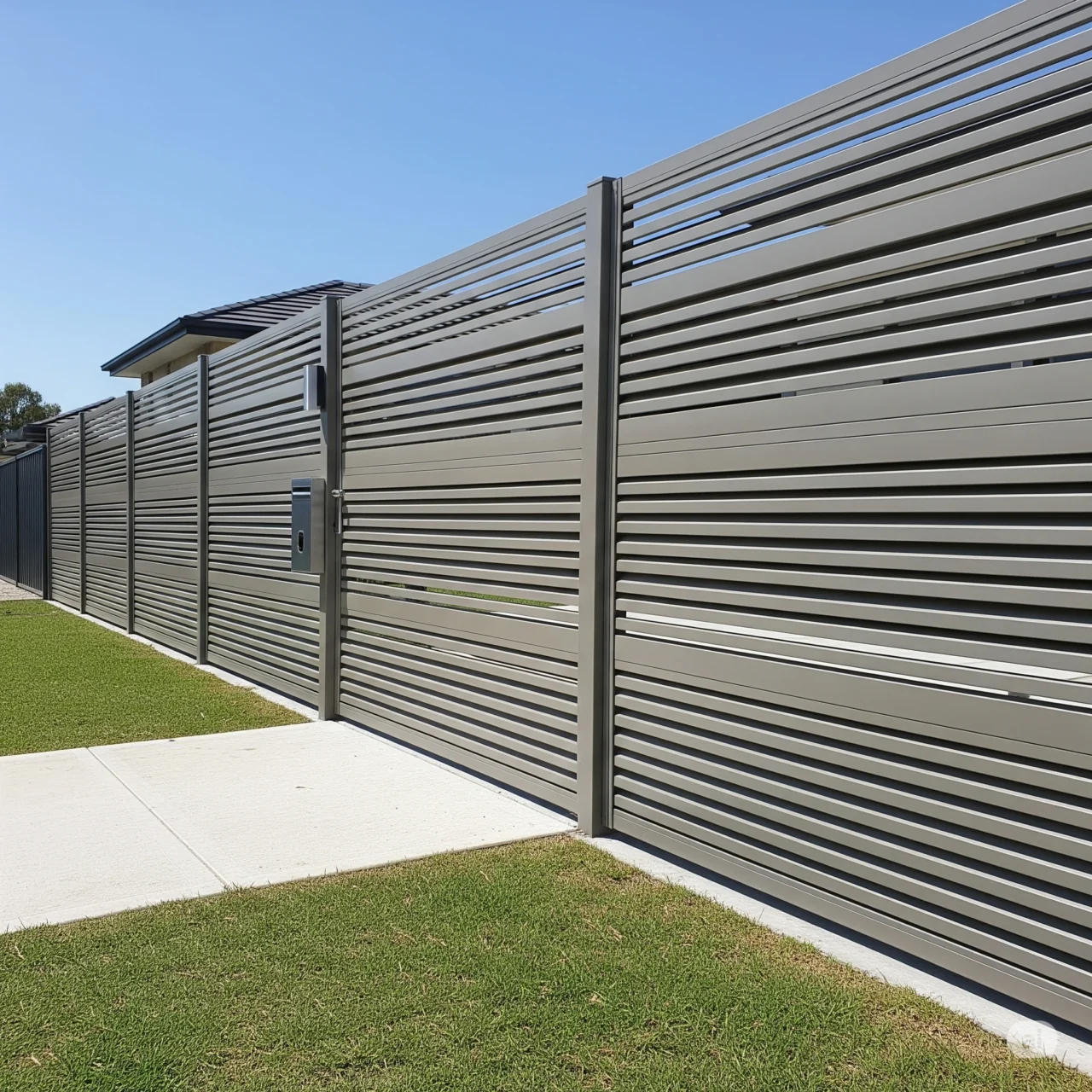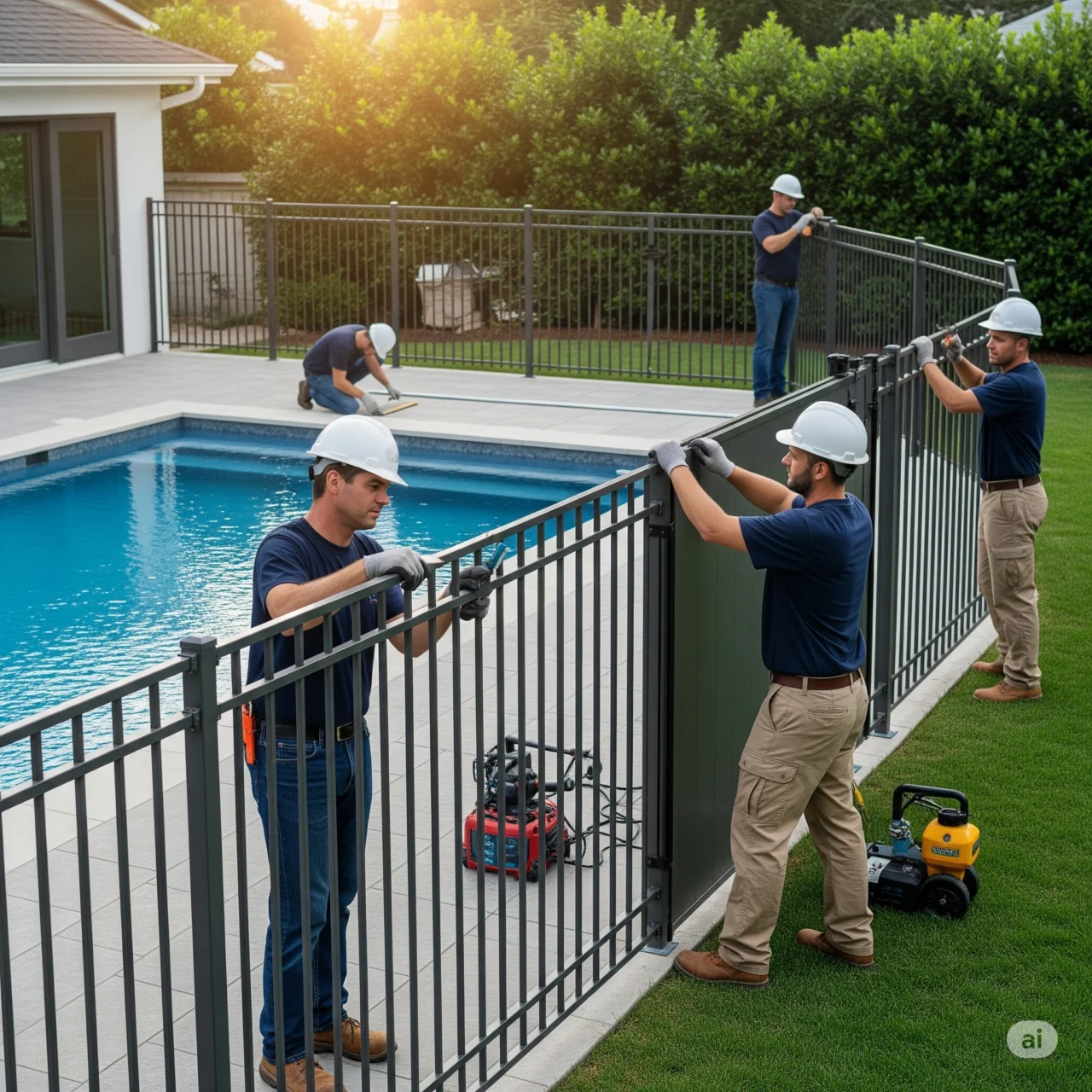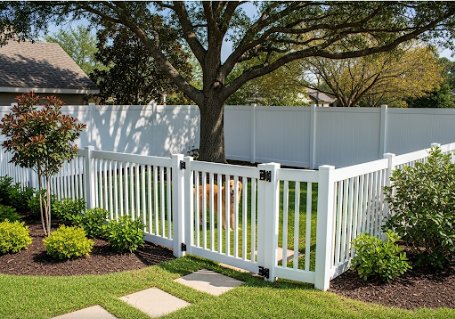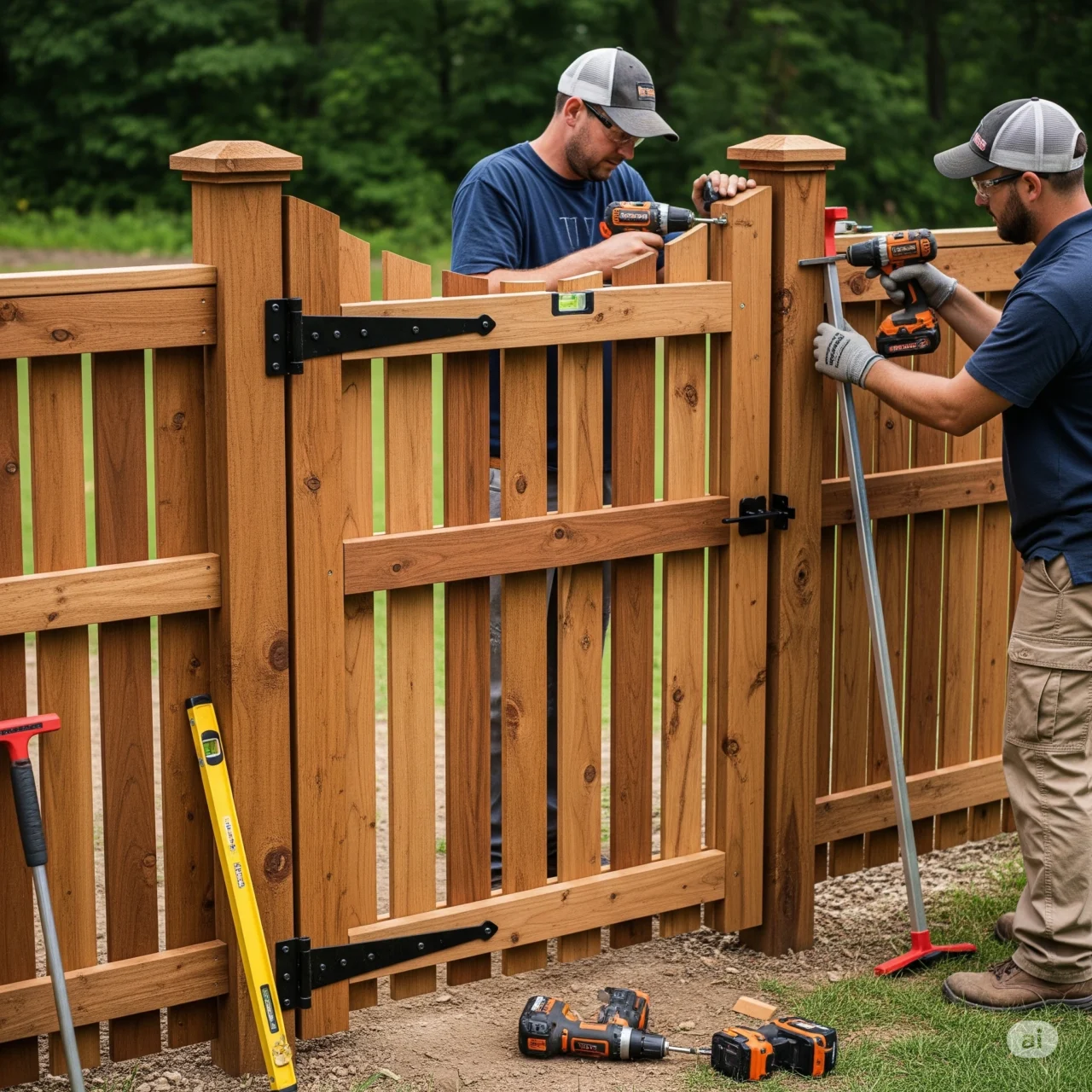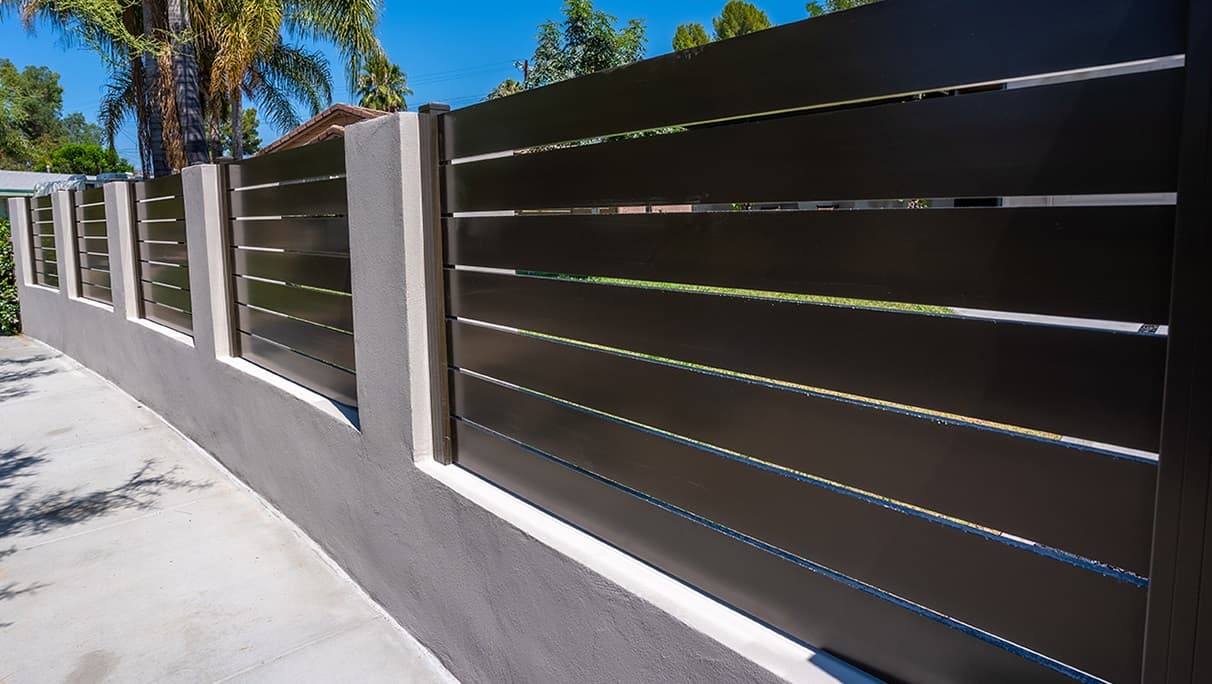In today’s world of architectural elegance and smart outdoor design, horizontal fences are a rising trend—balancing aesthetic beauty, functional benefits, and a sleek contemporary look. At Super Fabrications, based in Vienna, VA, we specialize in designing and installing premium-quality horizontal fences crafted from wood, aluminum, vinyl, chain-link, and composite materials.
In this guide, you’ll learn all about the key benefits, design styles, installation factors, and why a horizontal fence may be the perfect choice for your property.
1. What Is a Horizontal Fence?
A horizontal fence features boards or slats running parallel to the ground, as opposed to traditional vertical pickets. This orientation creates long, clean lines, giving outdoor spaces a modern, streamlined look.
2. Main Benefits of Horizontal Fencing
✔ Enhanced Aesthetic & Curb Appeal
Horizontal fences exude contemporary sophistication, ideal for homeowners looking to modernize their exterior.
✔ Optical Illusion for Spaciousness
The horizontal layout draws the eye outward, making even compact yards appear more expansive and inviting.
✔ Privacy Without Fully Blocking Views
By spacing slats thoughtfully, horizontal fences can offer privacy while still allowing glimpses of beautiful landscaping or scenic surroundings.
✔ Structural Durability
High-grade materials and design reinforce strength—boards resistant to ground moisture mean better longevity versus vertical planks.
✔ Versatility with Materials
Horizontal fences can be built using a wide range of materials—cedar, vinyl, aluminum, composite, and metal—allowing a match to any style or maintenance level.
✔ Eco-Friendly Wood Options
Using sustainably sourced woods like cedar or fir keeps projects eco-conscious while delivering a natural outdoor aesthetic.
3. Popular Materials for Horizontal Fences
| Material | Features & Benefits |
|---|---|
| Cedar/Douglas Fir | Natural look, rot- and insect-resistant, long-lasting, easily stained or sealed. |
| Aluminum | Lightweight, corrosion-resistant, low maintenance, ideal for sleek modern designs. |
| Vinyl/PVC | Highly durable, UV stabilized, maintenance-free, available in multiple colors. |
| Composite | Eco-friendly, rot-proof, combines wood fiber & recycled plastic for extra durability. |
| Metal (Galvanized Steel) | Ultra-durable, great for commercial and industrial aesthetics. |
4. Stylish Horizontal Fence Designs
1. Full Privacy Boards
Solid horizontal boards with no gaps—great for complete seclusion and a clean aesthetic.
2. Stepped Panels
Ideal for sloped terrain: panels maintain a consistent height, offering visual harmony.
3. Shadow Box or Louvered Style
Alternating slats offer privacy from straight on, but allow airflow and light to pass through.
4. Mixed Material Frames
Wood slats framed in black aluminum or steel offer a modern, high-end look.
5. Woven or Reed Slat Fences
Rustic charm with slats woven in and out of posts, adding unique texture and rhythm.
6. Gate-Focused Design
Horizontal boards outlined by metal frames around gates for added visual impact.
5. Design Tips & Considerations
-
Fence Height: 4–8 ft is standard—check local zoning laws and HOA requirements.
-
Post Quality: Use thicker posts (5×5 or 6×6) for better support, especially with wider gates.
-
Board Gapping: Zero-gap for full privacy; small gaps (~¼–⅜″) for airflow and visual appeal.
-
Frame-First Approach: Build a strong frame before attaching slats to prevent warping and misalignment.
-
Slope Handling: Use stepped panels or adaptable posts for inclined landscapes.
6. Installation Challenges & Solutions
⚠ Common Concerns:
-
Higher Cost: Premium materials and skilled labor may increase initial expense.
-
Installation Complexity: Requires precise leveling and framing for straight, clean lines.
-
Maintenance Needs: Wood slats may require sealing or staining; aluminum and vinyl need minimal upkeep.
✅ Why It’s Worth It:
-
Elevates curb appeal with a modern edge.
-
Long-lasting structure with low maintenance.
-
Adds value to your property and enhances security.
7. Horizontal Fences for Commercial Spaces
For commercial applications, horizontal fencing offers a clean, professional look that fits offices, restaurants, multi-family complexes, and retail storefronts. Materials like aluminum, composite, or powder-coated steel make it ideal for:
-
Outdoor dining areas
-
Rooftop enclosures
-
Privacy around HVAC units or dumpsters
-
Attractive perimeters and entry gates
It not only secures your space but makes a lasting first impression on clients and guests.
8. Why Choose Super Fabrications?
At Super Fabrications, we bring more than 20 years of craftsmanship and innovation to every fencing project. Here’s what sets us apart:
-
Material Expertise: Wood, vinyl, aluminum, composite—custom solutions for every need.
-
Expert Craftsmanship: Our team ensures every detail is handled with precision and care.
-
Tailored Designs: We work with you to achieve your vision—whether modern, rustic, or commercial-grade.
-
Professional Installation: We handle everything from permits to final walkthroughs.
-
Satisfaction Guarantee: Your project is not done until you’re 100% satisfied.
9. Cost & Timeline Estimates
-
Timeline: Residential fences typically complete within 3–5 days. Larger commercial projects may take longer depending on design.
-
Estimated Cost Per Linear Foot:
-
Wood (Cedar): $25–$40
-
Vinyl: $30–$50
-
Aluminum: $35–$60
-
Composite: $40–$65
Exact pricing may vary—get in touch for a custom quote based on design and scope.
-
10. FAQs
Q: Are horizontal fences secure?
A: Absolutely. With proper posts and design, they are just as secure—if not more—than traditional fences.
Q: Can I customize the gap between slats?
Yes! We tailor the spacing to meet your privacy and style needs.
Q: Do horizontal fences meet code?
Yes, we ensure all designs meet local zoning codes and HOA standards.
Q: Which material is best for low maintenance?
Aluminum and vinyl are top picks for clients who want a great look with minimal upkeep.
11. Let’s Build Your Perfect Fence
Looking for a modern fencing solution that enhances both style and functionality? A horizontal fence by Super Fabrications could be exactly what your home or commercial property needs. Let our expert team handle everything—from design to installation.
📞 Call us today at (888) 820‑6099
✉️ Email: info@superfabrications.com
📍 Visit: 2433 McClintic Ct, Vienna, VA 22180
🌐 Website: www.superfabrications.com
Let’s turn your vision into a lasting structure—built strong, built beautiful, built by Super Fabrications.

